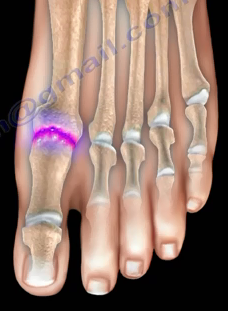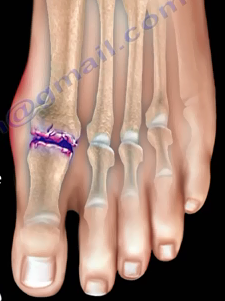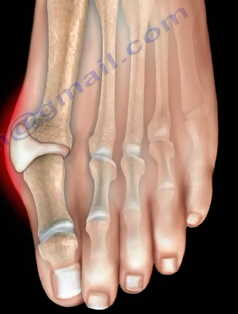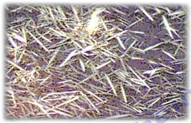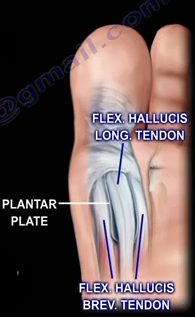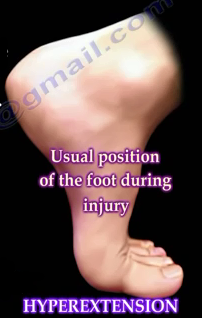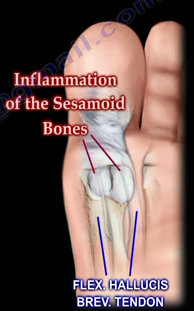Experiencing pain in your big toe is a relatively common occurrence. This is because the feet are constantly exposed to stress from the outside world and general overuse. Often times, injury results from participation in sporting events; however, this is not always the case. Injury to the foot and the resulting big toe pain can occur simply from walking, or running.
Arthritis
Arthritis of the big toe restricts movement of the big toe limiting motion to only small degrees. Degenerative arthritis of the big toe is painful, and results in stiffness and swelling of the first metatarsophalangeal joint. In this particular scenario, the patient may need a fusion of the joint.
Hallux Rigidus
Arthritis of the big toe joint can be present with large dorsal bone spurs. This condition is referred to as Hallux Rigidus. Hallux Rigidus restricts dorsiflexion of the big toe and is associated with swelling. In this case, cartilage will remain within the joint space and bone spurs around the joint. The first line of treatment usually calls for medication and shoe inserts. Next, a physician may remove 25% of the dorsal aspect of the metatarsal head, including the dorsal osteophytes. The procedure is contraindicated if the pain is located in the mid-range of joint motion. Often advanced arthritis will need a fusion.
Hallux Valgus (Bunion Deformity)
Hallux Valgus is deformity characterized by a lateral deviation of the big toe with enlargement of the tissue around the metatarsophalangeal joint (aka a bunion). Bunions can be painful and the pain may be aggravated by wearing shoes. It isn't very feasible to go a day without wearing shoes. Thus, when simply wearing shoes is painful, surgery becomes necessary.
Fun Fact: Hallux Valgus deformity is more common in women than in men.
Gout
The first metatarsal joint is the most common joint in the body to be affected by gout. Recurrent pain in the big toe can occur from gout. Gout is caused by the buildup of uric acid and the deposit of uric acid crystals inside the joint. Gout is usually very painful and it's crystals look like tiny needles. Often, gout will resemble an infection and a proper diagnosis is essential for treatment. Aspiration and analysis of the joint fluid is the best method for diagnosis. A positive indicator for gout on an X-Ray will show punched out periarticular erosions. However, most people with high levels of uric acid will not have a gouty attack.
Turf Toe
"Turf toe" is the common term used to describe a big toe injury of the plantar plate and sesamoid complex of the MTP. It is an injury to the joint at the base of the big toe caused by hyperextension. This particular condition often occurs in contact sports (hence the name). "Turf Toe" injury gets its origin from engaging in activity on fields covered in artificial turf. Artificial turf is a harder much more dense surface than regular grass. Thus, turf only allows for very little "give" when a force is placed on it. The easiest way to identify Turf Toe is by X-Ray. A positive identification may show a fracture or displacement of the sesamoid. An MRI may show disruption of the volar plate.
Sesamoiditis
There are two sesamoid bones, one tibular and one fibular. The sesamoiditis bones act like pulleys for the flexor tendons and are embedded into the tendons of the flexor hallucis brevis muscle. Sesamoiditis is generalized big toe pain located at the bottom of the big toe. The sesamoids are important to the big toe region because they absorb weight-bearing pressure and reduce friction on the metatarsal head. In addition, the sesamoids protect the flexor hallucis longus tendon as it glides between the two sesamoid bones. Any chronic sesamoid condition that is unresponsive to conservative treatment may require surgery.
Check out my other YouTube videos involving other foot problems:
https://www.youtube.com/watch?v=c7QewW3Up50
For more videos, visit my YouTube channel:
https://www.youtube.com/user/nabilebraheim
